Bolt Industry FAQs
Heavy Square Head Bolts and Nuts
Are heavy square head bolts and heavy square nuts available?According to ASME, a global standards organization which provides manufacturers with guidelines and tolerances for producing parts, there are no listed dimensions to manufacture heavy square head bolts. However, ASME does provide dimensions for heavy square nuts. ASME B18.2.1 This standard covers the dimensional requirements for nine product types of inch series bolts and screws... Read more
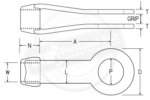
Clevis Numbers
Why are clevises called out by a number?Clevises are a component of tie rod assemblies that rods thread into. Unlike most other female threaded components such as nuts or turnbuckles, calling out a clevis size by the diameter of rod being threaded into it is not the correct way to reference it. Clevises are called out by a number, ranging from a... Read more
Bolt Length
Does the length measurement of a bolt include the head?In most cases, when specifying the length of a headed bolt, the thickness of the bolt head is not included. For instance, if you were to order a ¾” x 24” hex head bolt, the bolt would measure 24” from under the head. One exception to this method of measurement is countersunk bolts. When specifying... Read more
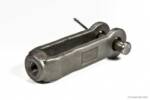
High Strength Clevises & Turnbuckles
Are high strength clevises and turnbuckles available?High-strength clevises can be provided in instances where smaller clevises are needed while keeping a higher safe working load. High-strength clevises are also used to develop the full capacity of high-strength threaded rods. Since high-strength clevises are not readily available in the marketplace, these items can add significant lead time and cost to the assembly.... Read more
Rural Utilities Service
What is the RUS or the Rural Utilities Service?The United States Rural Utilities Service (RUS) is in charge of administering programs that provide rural communities with infrastructure or infrastructure improvements. The programs administered by the RUS include water and waste treatment, electric power, and telecommunications services. The RUS is a part of the USDA Rural Development Agency of the United States Department of Agriculture. The RUS provides assistance... Read more
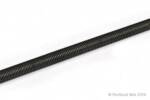
20′ All Thread
Are twenty foot lengths (20’) of all thread rod available?20’ lengths of all thread rod are not commercially available off the shelf and would have to be custom made to order. In most instances, all thread rod is cut to length and it is more economical to use more sticks of standard 12 foot and shorter sizes. If a 20 foot connection is needed,... Read more
1/2″ x 1″ Structural Bolts
Are ½” A325 Structural Bolts available in 1” length?A325 structural bolts start at ½” diameter with the shortest length available being 1-1/4”. As far as the ASTM specification is concerned, there is not an official documented reason as to why they are not readily available; however when asked to provide 1” length, we have found that they are not easily obtained in the marketplace.... Read more
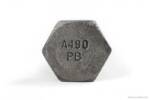
1/2″ A490 Bolts
Why can’t I find 1/2” diameter A490 bolts?ASTM F3125 Grades A490 and A325 structural bolts are mass-produced through 1-1/4” diameter. However, there is an exception for 1/2” A490 bolts. Compared to other diameters, these are not commonly used. Therefore, 1/2” diameter A490 bolts are not mass-produced and are not readily available in the marketplace. There are a couple of ways to work around this. First,... Read more
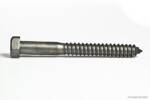
Lag Screw vs. Lag Bolt
What is the correct way to refer to a lag, screw or bolt?Although these terms are used interchangeably, lags should technically be referred to as a screw and not as a bolt. A bolt is a fastener with machine thread that can accept a nut. A bolt is properly assembled and tightened by rotating the nut. A screw, on the other hand, is a fastener that is... Read more
Tap Bolt vs Cap Screw
What is the difference between a tap bolt and a cap screw?A tap bolt is (typically) a fully threaded hex bolt, while a cap screw is (typically) a hex head bolt that will be installed by turning the head of the bolt (screw) instead of tightening it with a nut. Usually cap screws are being threaded into something (a piece of machinery for example), rather than... Read more
